In industrial applications, selecting a proper dredging rubber hose is very important to ensure efficiency, safety, and longevity. This article thoroughly explores the factors to consider when choosing a dredging rubber hose, including material types, durability, flexibility, and specific industry requirements. This understanding allows readers to make informed choices that meet their operational necessities. Choosing the proper dredging hose is essential as it directly affects performance and productivity, especially in heavy industries such as construction or mining. Let us look into the crucial criteria for selecting an ideal dredging rubber hose and its best practices for application.
What Are the Key Features of a Dredging Rubber Hose?
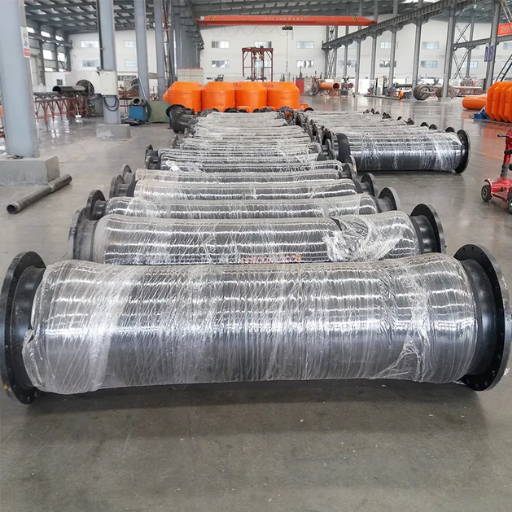
Image source: https://www.pedredgepipe.com/
Dredging rubber hoses are designed with several key features that make them suitable for industrial applications. Firstly, high durability is essential so that these hoses can withstand harsh environments and abrasive materials associated with dredging operations. Secondly, there should be flexibility to easily maneuver and install different configurations of the hoses even in limited spaces. Moreover, resistance to weathering elements and chemicals assures longevity without affecting the performance of these hoses over time when subjected to challenging conditions overall. It’s also necessary for dredging hoses to have a reinforced construction, which adds more strength, minimizing bursting under high-pressure risk. Finally, effective weight and buoyancy characteristics are vital in easier handling during underwater dredging processes.
Understanding Wear-Resistant Properties
Wearability on dredging rubber hoses is necessary for their resilience and efficiency in rough conditions. The main factor to be looked at here is how well the hose can withstand the deterioration from the materials carried. Rubber composition is another essential element when wearing out; several formulations using synthetic substances or fortifying additives can lead to longer life spans and better durability. The thickness of the hose wall also plays a significant role, as thicker walls typically imply that they would resist wear better. Many top producers stress on testing methods like “Abrasion Resistance Test” which demonstrate their products withstanding challenging dredging applications. Ultimately, selecting a hose with superior wear-resistant properties is essential for minimizing downtime and maintenance costs in industrial operations.
Importance of High Tensile Strength
High tensile strength is essential for dredging rubber hoses, ensuring they do not break or deform under heavy loads. Tensile strength mainly refers to the maximum tension a material can endure before rupturing when it is stretched or pulled. For dredging operations, hoses often encounter extreme conditions, including high-pressure environments and abrasive materials, making robust tensile strength vital to maintaining performance under stress. Materials that are more robust help avoid failures, which cause costly downtimes, unsafe work areas & project delays. Also, hoses with high tensile strength have improved resistance against both fatigue and wear, helping them last longer and making them more efficient in industry use. Typically, manufacturers incorporate cutting-edge materials and innovative engineering strategies aimed at improving this attribute, thus giving dependable solutions tailored specifically for the demanding requirements of dredge industries during the production process.
Choosing the Right Rubber Compound
To choose the proper rubber composition for dredging hoses, it is essential to consider factors such as the environment in which the hoses will be used, the materials being carried, and specific performance requirements. Leading producers recommend compounds with durability, flexibility, and resistance to abrasion and chemicals. Natural rubber, for instance, is favored by its elasticity and resilience, which makes it suitable for dynamic applications, while neoprene and nitrile are among synthetic compounds that have good resistance to oils and many different chemical substances. Furthermore, one has to consider temperature range and potential exposure to UV light or ozone since these may significantly impact rubber lifespan. Ultimately, sufficient time choosing the correct compound is crucial in achieving optimal hose performance and lifespan in challenging dredging environments.
How do you select the correct size and type of hose for dredging?
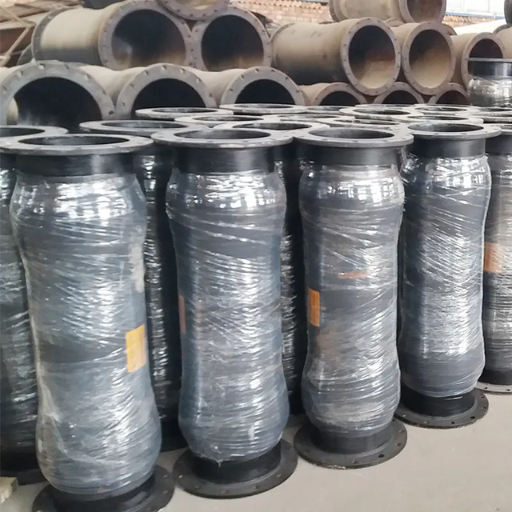
Choosing an appropriate hose size and type for dredging requires consideration of several vital factors. Start by determining an appropriate diameter that enables efficient flow of material depending on the type and quantity of materials handled; too small diameter can result in blockages and increased wear, whereas too large one may affect pressure/efficiency. The next important thing is the length of the hose; make sure it reaches where work will be done without having excessive bends, which would hinder flow. Also, select a hose with the correct working pressure rating that can resist harsh conditions without causing failure risks. In addition, match the type of your hose – either suction or discharge – with a particular dredging operation you have at hand. Finally, manufacturers or industry experts could give insights into the best options based on specific dredging situations or requirements.
Large Diameter vs. Small Diameter Options
While distinguishing between significant and small-diameter hoses for dredging, knowing their diverse advantages and applications is essential. Large-diameter hoses are typically made to transport large volumes of materials, thus facilitating quick removal of sediments and debris. They are suitable for big jobs involving excavation activities. They can handle more excellent flow rates, which is beneficial when working with heavy, dense materials. On the other hand, small-diameter hoses are highly flexible and can easily be moved in tight spaces. Examples include precise operations that require control over the flow rate, for instance, while undertaking smaller dredging tasks or there is limited access to a site. Another benefit of small-diameter pipes may be that they are light, making them easy to handle and reducing the physical burden on users. Ultimately, what helps choose between larger or smaller hoses depends upon the specific needs of a particular dredging project, such as material type, flow rate, and location characteristics.
Suction and Discharge Hose Differences
Suction and discharge hoses have distinct roles in dredging operations; therefore, understanding these dissimilarities improves operational efficiency. Suction hoses have been designed to draw fluids or slurries from one place to another using negative pressure as a driving force behind movement. Such pipes should bear external atmospheric pressure without collapsing during usage and this explains why they are often reinforced externally. Unlike suction hoses, discharge ones carry out only one task – transporting material away from the dredged area. They must handle positive pressure and typically come with more strength to prevent rupture while successfully carrying out such an operation. Both types of hoses come in various sizes and materials to accommodate different dredging conditions, making it essential to choose the right type based on specific operational needs.
Flexible Dredge Hose vs. Rigid Hose
Several critical differences between flexible and rigid dredge hoses can significantly impact their performances in dredging operations. Dredge flexible hoses are meant to be bent and adapt to different terrains, making them suitable for situations where movement and maneuverability are required. These are often made of rubber or reinforced thermoplastics, which enhance their flexibility without compromising their durability. Such flexibility reduces the tendency to kink and is particularly useful when changing site levels or navigating obstacles.
The opposite is true for the case of hard hoses because they offer enhanced stability and can carry higher loads without much deformation. Usually, these hoses are used when the transportation path is relatively linear, thus minimizing workplace variations. Additionally, hard hoses resist pressure better than soft ones, especially during specific dredging exercises. Nevertheless, it has limited applications in small spaces and is bulky during transportation and installation.
Finally, one cannot recommend rigid or flexible dredge hoses based solely on their merits but instead depending on site layout, material type, and operational flexibility, among other particular demands of the project.
What Are the Benefits of Using Floating Dredging Hoses?
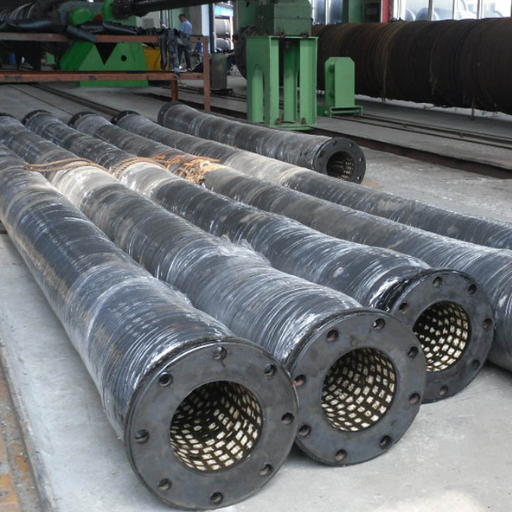
Dredging operations are served by floating hoses that offer numerous advantages. For example, the fact that they float helps them stay on the water’s surface. It thus minimizes the chances of getting hung up on underwater obstructions and makes their movement smoother when conveying materials. This feature is handy in applications where traditional hoses get submerged or stuck. Moreover, they are made for high flow rates and hastening dredging activities. In addition, being light in weight makes it easy to handle, fix, and move them around, making them more convenient to users. Furthermore, floating dredge hose flexibility enables fitting into different water levels, which may alter at sites. All these attributes combined make floating hoses indispensable for most dredging tasks.
Advantages of Self-Floating Hose
Floating, self-sustaining hoses have been credited with unique benefits that enhance dredging operations. Most importantly, their design allows them to be buoyant independently, allowing them to float effortlessly on top of water without any external aids. As a result, such pipes do not risk tangling with debris when transferring materials from one place to another. Secondarily, self-floating tubes are manufactured to resist unfavorable elements such as temperature variations and strong tides, hence serving long periods before breaking down. Besides being flexible, they are also lighter in weight, allowing easier handling processes during their deployment and carrying out tasks at different locations. They are, therefore, preferred within varying conditions of use due to fluctuations in water levels, among other factors relating to site specifications. Again, versatility in adapting to changing hydrological situations renders these varieties suitable for dredging under diverse atmospheric settings. Generally speaking, self-floating hose lines are essential in increasing the effectiveness and security of excavation activities carried out in water bodies.
Service Conditions for Floating Hoses
To ensure performance and longevity, floating hoses are constructed for operation in certain service conditions. The essential conditions are:
- Water Temperature: Material degradation should be avoided by using floating hoses within a particular temperature range. This extends typically from -15°C to 45°C, depending on the type of materials used.
- Pressure Ratings: The maximum pressure ratings indicated on the hose should not be surpassed since they can cause ruptures and failures. Most floating hoses have pressure ratings between 10-20 bar (145-290 psi), although specifications may vary.
- Chemical Compatibility: Floating hoses must use materials that will not react with or degrade any substances being transported through them. Hence, the hose has to be resistant to oils, chemicals, and other potential contaminants without losing integrity.
- Operational Environment: These hoses are usually designed to withstand harsh marine environments, which include exposure to ultraviolet rays, salt water, and different forms of marine life. These conditions call for frequent inspections and maintenance to avoid wearing out.
Complying with these service conditions ensures the optimal functioning and durability of floating hoses in dredging and marine applications.
Comparing Floating Hose to Non-Floating Options
Regarding significant differences between floating and non-floating hoses, several aspects help determine their appropriateness for specific uses.
- Buoyancy: There is reduced entanglement risk with underwater obstacles while handling floating obstacles is easier because they have been made to stay on top of water bodies. In contrast, non-floating hoses have a tendency to sink, which complicates their deployment and retrieval procedures, especially in aquatic environments.
- Maintenance and Durability: To withstand tough weather at sea, these kinds of pipes are usually manufactured using UV-resistant materials, which also have antifouling properties against organisms in the ocean. Alternatively, frequently replacing non-floating pipes might be necessary due to increased costs resulting from high rates of wear occasioned by exposure to elements like sunlight or sea creatures.
- Application Suitability: Floating hoses are best suited for dredging and offshore activities because they can move freely on water. Non-floating hoses may be appropriate for some land-based uses, but they lack the versatility required by marine environments.
Normally, the choice between floating and non-floating hoses depends on project specificities, environmental conditions, and operational efficiency.
How to Ensure Durability and Longevity in Industrial Hoses?
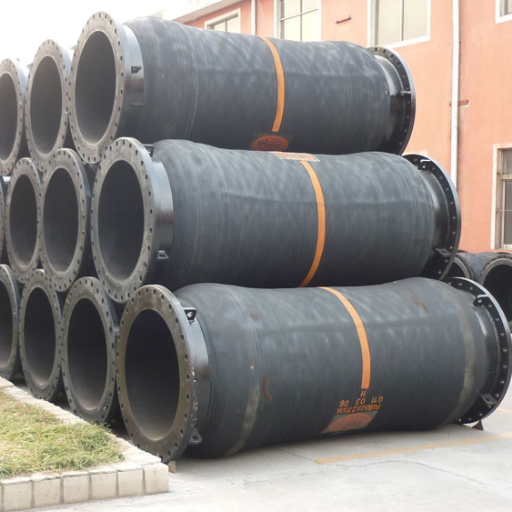
The following should be considered to ensure that industrial hoses are durable and long-lasting:
- Regular Inspections: Visual and physical inspection of hoses should be done regularly to recognize early signs of wear, cracks, or other damages. This way, problems can be avoided before they become larger.
- Proper Storage: Hoses should be stored in excellent, dry places away from direct sunlight or harsh chemicals. Using racks or reels protects the materials of the hose from getting kinks that may damage them during storage.
- Correct Installation: Follow manufacturer guidelines for installation to avoid undue stress on hoses. Ensure that connections are secure and use appropriate fittings to prevent leaks.
- Routine Cleaning: Once in a while, clean the water pipes to remove dirt and foreign matter blocking them. The integrity of the hose material is maintained through the proper application of recommended cleaners.
- Temperature and Pressure Management: Be conversant with temperature and pressure limits set by manufacturers. Operating within these limits significantly reduces the chances of damage.
These steps help increase the lifespan and enhance performance leading to continuance efficacy for industrial applications.
Reinforcement Techniques and Materials
Several methods and materials are commonly applied when it comes to reinforcing industrial hoses so that their durability and performance can be improved:
- High-Tensile Fabrics: High-tensile synthetic fabrics like polyester or nylon add considerable strength to hoses. These fabrics resist abrasion, thereby increasing resistance against internal pressures.
- Steel Wire Reinforcement: For high pressure and durability are required, steel wire spirals or braids can be used to strengthen hoses. This reinforcement prevents bursting and keeps the hose’s shape under extreme circumstances.
- Dual-Layer Construction: Some types have two layers, one inside for fluid delivery and another outside to keep away elements that may cause destruction in an environment. This construction provides extra resilience and protection from wear out by outside influences.
Using these techniques along with such materials will allow industries to enjoy longer-lasting hoses that perform well under trying conditions.
Impact of Abrasive Materials on Hose Longevity
The life of industrial hoses can be significantly reduced by abrasive materials, causing them to wear out and become damaged before they should. These may encounter sand, gravel, or other abrasive substances that might corrode their internal and external surfaces, leading to leakage and breakages. Such effects can be moderated by using specially designed hoses for abrasive applications like those with reinforced linings or abrasion-resistant materials. Furthermore, their continued use can only be guaranteed through regular inspections, including cleaning and checking for wear.
Maintenance Tips for Prolonged Hose Life
Ensuring the lifespan of industrial hoses is maximized requires proper maintenance practices.
- Routine Inspections: Regularly check for signs of wear, cracks, and leaks. This will enable you to promptly respond to any issues concerning its inner parts, outer parts, and fittings.
- Safe Storage: Store hoses in a cool, dry place away from sunlight and extreme temperature conditions. This prevents damage from UV light and reduces the likelihood of kinks or crushes.
- Cleaning: When not being used, ensure that any debris, chemicals, or abrasive materials have been removed from the hose pipe. For thorough rinsing purposes, a mild soap solution should be used, and the hose pipe should be allowed to dry completely before storage.
- Don’t Stretch it too Far: To prevent your hose from wearing out prematurely when connecting, make sure it is not overstretched or twisted at all times. Use fittings and connections appropriate for their intended usage.
- Choose Something Suitable: Always go for those meant explicitly for the fluids they’ll carry or conditions they will face—such specifications would elevate them above the rest in Beauty And Longevity Terms.
If followed properly, these tips can increase industries’ safety during operations and extend the lives of their pipes, leading to efficiency in their outputs.
What Are the Applications of Ceramic Rubber and Composite Hoses in Dredging?
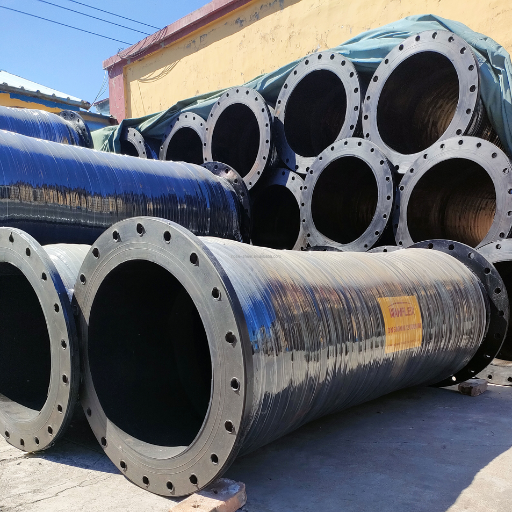
To maximize their resilience and durability, dredging industries have increasingly adopted the use of ceramic rubber as well as composite hoses, which are wear-resistant. These pipes are specifically designed to convey various materials, such as sand and mud, among others, in a manner that can effectively handle the complex conditions usually experienced during dredging activities. This lightweight makes it easier to handle and install, while their robust construction ensures they last longer, thus reducing frequent replacements. Moreover, the flexibility of these tubes allows for uninterrupted movement and adjustments during dredging operations, thereby improving operational efficiency and safety.
Advantages of Ceramic Rubber Hose
Dredging is one of the fields where ceramic rubber has become popular with its unique benefits. Firstly, they don’t tear easily in harsh environments, like when transporting abrasive materials such as sediments and sands, which increases their lifespan significantly since there is minimal abrasion. Secondly, these hoses are more flexible, making them easier to position or install in complex situations, resulting in increased efficiency in terms of operation. In addition, ceramic rubber hoses can withstand high temperatures under pressure and are reliably used even in extreme conditions. Lastly, being lighter than conventional alternatives reduces strain on machines and people, enhancing workflows within this specific industry niche.
When to Use Composite Hoses
In the petrochemical, marine, and food processing industries, among others, composite hoses are most useful in situations requiring the safe transfer of a wide range of liquids and gases. Considering their lightweight structure, they can be easily installed in tight spaces, while the construction material also allows them to tolerate various chemical exposures and temperatures. As such, these hoses are highly beneficial since they allow flexibility and bending and thus can easily be routed through complex systems. These hoses are the best when high resistance to kinking and abrasion is needed, yet consistent performance and longer working life must be maintained under arduous operating conditions.
Special Applications and Conditions
When considering hose applications under exceptional circumstances, certain factors come into play during hose selection. For example, in marine fields, the hoses should tolerate severe weather and resist corrosion from saltwater pollutants. This explains why composite hoses are commonly found here: they can be handled very quickly since they do not have much weight, allowing for easy installation. In the food processing industry, it is paramount that all sanitary standards relating to machinery have been met by all piping, including those made up with FDA materials, ensuring that edible substances reach us safely through our tanks. Moreover, using pipes in chemical industries that do not dissolve specific chemicals or reagents is one way to prevent leaks while safely facilitating operations within factory premises. Such requirements show that specialized pipe features are needed for effective catering to distinct operational needs experienced across different sectors.
Reference sources
-
Trelleborg: This source offers detailed information on the design, construction, and performance of dredging rubber hoses, emphasizing their durability, flexibility, and resistance to wear and tear in harsh environments. Read more
-
Dredge Yard: This source provides insights into the features and benefits of using dredging rubber hoses, including their robustness, suitability for high-pressure applications, and long service life. Read more
-
The Weir Group: This source discusses the advantages of using high-quality rubber hoses in dredging operations, focusing on their resistance to abrasion and corrosion and their ability to handle high-pressure slurry transportation. Read more
Related Articles:General Specifications for Dredging Rubber Hoses





